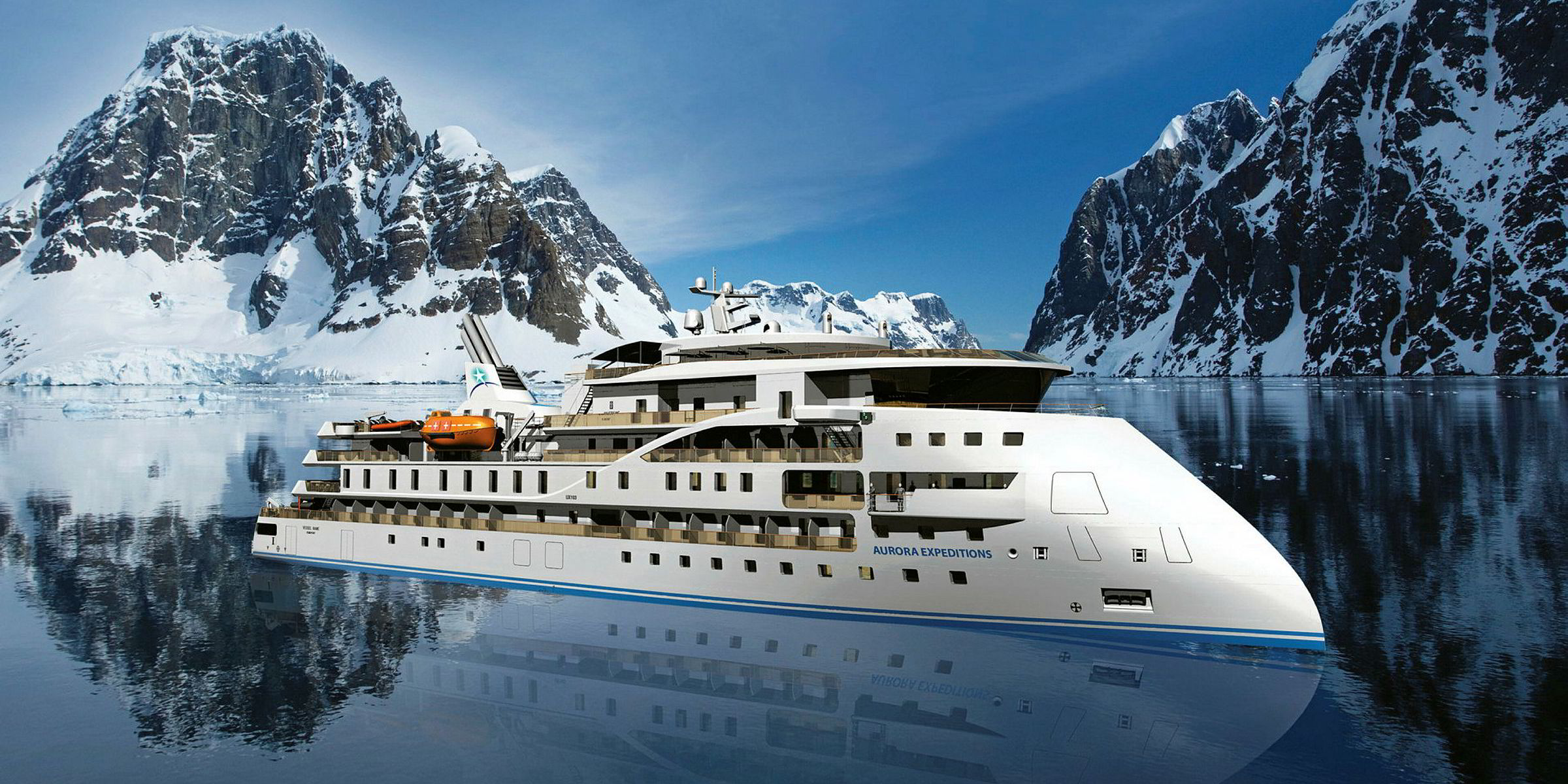Aurora Expeditions’ three shareholders have bought a 50% stake in an ice-class expedition cruiseship it is chartering from SunStone Ships.
Aurora managing director Robert Halfpenny tells TradeWinds that SunStone, which ordered the 7,400-gt, state-of-the-art ice-class 1A cruiseship at China Merchant Industry Holdings (CMIH), has also allowed Aurora to play a key role in the vessel’s design.
Sunstone forged a framework agreement with CMIH in March for a series of 160 to 200-passenger expedition cruiseships that will be the first to use Ulstein’s patented X-bow technology, which can pierce waves with much greater stability, an important consideration for ships crossing notoriously rough seas to the polar regions.
Australia’s Aurora operates two converted 1,700-gt Russian-owned research ships that, although rugged enough to operate in Antarctic waters, can best be described as offering functional comfort rather than anything resembling luxury.
Halfpenny says that while a large number of small ultra-deluxe ships are being kitted out to offer adventure-style cruising, the ship Aurora is getting will be more of a rugged expedition vessel than a luxury cruiseship.
“We want the right ship for the expedition market — the kind of ship where you don’t mind scratching the paint,” he said.
“This company has many years of experience operating ships in the polar regions. When designing the ship, we tapped the experience of everyone who has worked on our ships. They helped us to create what we think will be a ship that is truly fit for purpose.”
According to Halfpenny, the vessel has been taken on an open-ended charter. It will be delivered in time for the 2019-2020 Antarctic cruise season, which begins in November 2019.
Niels-Erik Lund-led SunStone signed up for an initial four firm orders at CMIH, with options for a further six. So far, Aurora has agreed to one ship but Halfpenny says it has the option to add more.
“Right now, we are sailing at 97% capacity in Antarctica and 94% capacity in the Arctic, so we need additional capacity,” he said, adding that while Aurora plans to continue with its two existing converted research ships, they are getting older and will eventually require replacing.
The advanced age of the expedition cruiseship fleet prompted SunStone to move ahead with its long-mooted newbuilding plans. Lund previously told TradeWinds that the ships are being ordered against a growing demand for expedition cruising and the need to replace an ageing fleet.
He estimated that the global fleet of 37 expedition cruiseships of this size range has an average age of 28 years, and most were converted from other types of vessels.
Expedition cruising, once a niche market on the distant fringes of the cruise industry, has exploded in popularity in recent years, with numerous new ships ordered as high-end cruise players such as Hapag-Lloyd, Crystal, Silversea and Hurtigruten have moved in.
Other expedition operators that previously operated converted research ships have also upgraded by ordering purpose-built newbuildings.
About 20 cruiseships capable of operating in the expedition cruise trades are on order for delivery between now and 2021, although a handful of these orders are still at the letter of intent stage.
The requirement for robust ships has seen most of these orders placed at yards that have not traditionally built cruiseships, such as Vard, Damen, Kleven Werf, Brodosplit and Uljanik.



